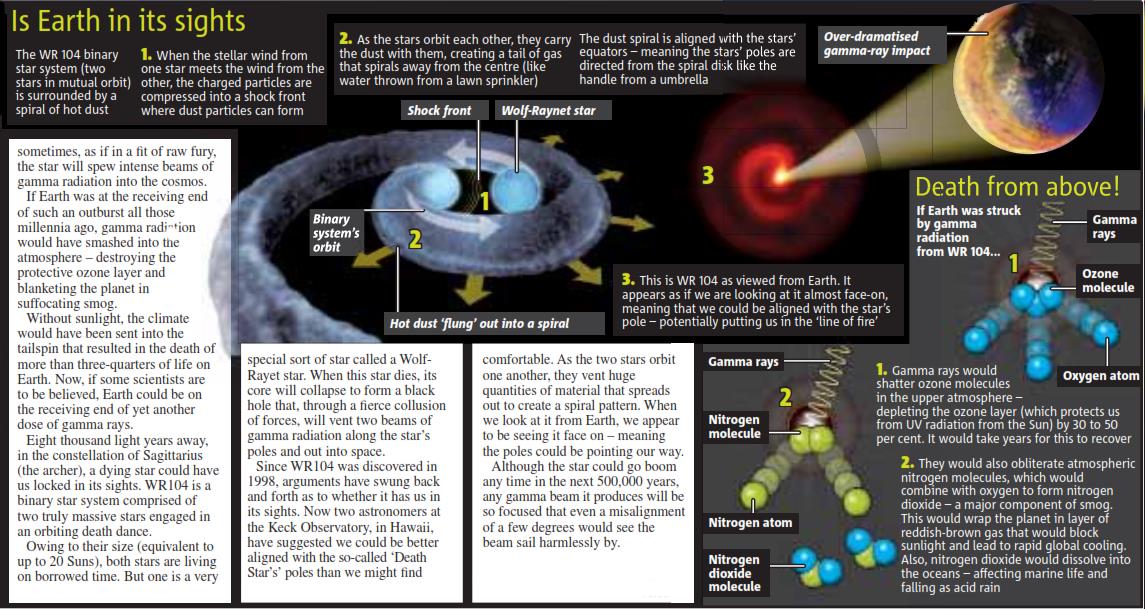Making jet fuel out of carbon dioxide
Courtesy: by Bob Yirka , Phys.org 23 December 2020
Credit: Unsplash/CC0 Public Domain
A team of researchers affiliated with several institutions in the U.K. and one in Saudi Arabia has developed a way to produce jet fuel using carbon dioxide as a main ingredient. In their paper published in the journal Nature Communications, the group describes their process and its efficiency.
As scientists continue to look for ways to reduce the amount of carbon dioxide emitted into the atmosphere, they have increasingly focused on certain business sectors. One of those sectors is the aviation industry, which accounts for approximately 12% of transportation-related carbon dioxide emissions. Curbing carbon emissions in the aviation industry has proved to be challenging due to the difficulty of fitting heavy batteries inside of aircraft.
In this new effort, the researchers have developed a chemical process that can be used to produce carbon-neutral jet fuel.
The researchers used a process called the organic combustion method to convert carbon dioxide in the air into jet fuel and other products. It involved using an iron catalyst (with added potassium and manganese) along with hydrogen, citric acid and carbon dioxide heated to 350 degrees C. The process forced the carbon atoms apart from the oxygen atoms in CO2 molecules, which then bonded with hydrogen atoms, producing the kind of hydrocarbon molecules that comprise liquid jet fuel. The process also resulted in the creation of water molecules and other products.
Testing showed that over 20 hours, the process converted 38% of the carbon dioxide in a pressurized chamber into jet fuel and other products. The jet fuel made up 48% of the produced products—the others were water, propylene and ethylene. The researchers also note that using this fuel in aircraft would be carbon-neutral because burning it would release the same amount of carbon dioxide that was used to make it.
The researchers also claim their process is less expensive than other methods used to produce fuel for airplanes, such as those that convert hydrogen and water into fuel—primarily because it uses less electricity. They also point out that conversion systems could be installed in plants that currently emit a lot of carbon dioxide, such as coal fired power plants.
Engineers go microbial to store energy, sequester carbon dioxide
Courtesy: by Blaine Friedlander, Cornell University - 15 December 2020
Bioengineered microbes may one day be used to store the sun’s energy, as well as absorb atmosphere
By borrowing nature's blueprints for photosynthesis, Cornell University bioengineers have found a way to efficiently absorb and store large-scale, low-cost renewable energy from the sun—while sequestering atmospheric carbon dioxide to use later as a biofuel.
The key: Let bioengineered microbes do all the work.
Buz Barstow, assistant professor of biological and environmental engineering at Cornell University, and doctoral candidate Farshid Salimijazi have assembled theoretical solutions and models that calculate efficiency in microbes, which could take in electricity and store carbon dioxide at least five times more efficiently than photosynthesis, the process by which plants turn sunlight into chemical energy.
"Soon, we will be living in a world with plentiful renewable electricity," Barstow said. "But in order to bring the bountiful energy to the grid, we will need energy storage with a capacity thousands of times greater than we have today."
The research, "Constraints on the Efficiency of Engineered Electromicrobial Production," was published in October in the journal Joule. Salimijazi is lead author.
Electromicrobial production technologies fuse biology and electronics so that energy gathered from wind, sun and water can get converted into renewable electricity in the form of energy-storage polymers (engineered microbes). Solving a storage problem, these microbes can be used on demand or to create low-carbon transportation fuels.
We need think about how we can store energy for rainy days or for when the wind doesn't gust," he said, noting that battery or fuel-cell technology can take up a lot of space. "We need solutions on how to store this large amount of energy in a cheap and clean way."
In the paper, the researchers suggest taking advantage of microbial electrosynthesis, in which incoming electrons are fed directly to an engineered microbe, which would convert carbon dioxide into non-carbon molecules. More research is necessary to determine the best microbes for the job.
Postdoctoral researcher Alexa Schmitz, a member of Barstow's lab, said the engineered microbes both store energy and absorb carbon dioxide. The CO2 can be converted into a hydrocarbon fuel—effectively neutralizing the carbon cycle, resulting in net-zero carbon emissions.
"While the hydrocarbon fuel would not be carbon negative, carbon neutrality is still very good in this case," Schmitz said. "For a lot of machinery or in aviation, society may still need low-density hydrocarbon fuels for that sector."
That scenario is much better than carbon expansion, she said. "We want to be able to make low-carbon fuel without digging for oil or getting gas out of the ground," she said, "and then releasing the carbon into the atmosphere.
"The microbes act as an efficient microscopic fuel cell," said Barstow, a Cornell Atkinson fellow. "That's why we're offering this road map for the best ways to exploit this potential. More research is necessary to determine the best microbes for the job, as everything comes down to efficiency at the end of the day."
Engineered bacteria could be missing link in energy storage
Courtesy: by Krishna Ramanujan, Cornell University 23 May 2029
Credit:CC0 Public Domain
One of the big issues with sustainable energy systems is how to store electricity that's generated from wind, solar and waves. At present, no existing technology provides large-scale storage and energy retrieval for sustainable energy at a low financial and environmental cost.
Engineered electroactive microbes could be part of the solution; these microbes are capable of borrowing an electron from solar or wind electricity and using the energy to break apart carbon dioxide molecules from the air. The microbes can then take the carbon atoms to make biofuels, such as isobutanol or propanol, that could be burned in a generator or added to gasoline, for example.
"We think biology plays a significant role in creating a sustainable energy infrastructure," said Buz Barstow, assistant professor of biological and environmental engineering at Cornell University. "Some roles will be supporting roles and some will be major roles, and we're trying to find all of those places where biology can work."
Barstow is the senior author of "Electrical Energy Storage With Engineered Biological Systems," published in the Journal of Biological Engineering.
Adding electrically engineered (synthetic or non-biological) elements could make this approach even more productive and efficient than microbes alone. At the same time, having many options also creates too many engineering choices. The study supplies information to determine the best design based on needs.
"We are suggesting a new approach where we stitch together biological and non-biological electrochemical engineering to create a new method to store energy," said Farshid Salimijazi, a graduate student in Barstow's lab and the paper's first author.
Natural photosynthesis already offers an example for storing solar energy at a huge scale, and turning it into biofuels in a closed carbon loop. It captures about six times as much solar energy in a year as all civilization uses over the same time. But, photosynthesis is really inefficient at harvesting sunlight, absorbing less than one percent of the energy that hits photosynthesizing cells.
Electroactive microbes let us replace biological light harvesting with photovoltaics. These microbes can absorb electricity into their metabolism and use this energy to convert CO2 to biofuels. The approach shows a lot of promise for making biofuels at higher efficiencies.
Electroactive microbes also allow for the use of other types of renewable electricity, not just solar electricity, to power these conversions. Also, some species of engineered microbes may create bioplastics that could be buried, thereby removing carbon dioxide (a greenhouse gas) from the air and sequestering it in the ground. Bacteria could be engineered to reverse the process, by converting a bioplastic or biofuel back to electricity. These interactions can all occur at room temperature and pressure, which is important for efficiency.
The authors point out that non-biological methods for using electricity for carbon fixation (assimilating carbon from CO2 into organic compounds, such as biofuels) are starting to match and even exceed microbes' abilities. However, electrochemical technologies are not good at creating the kinds of complex molecules necessary for biofuels and polymers. Engineered electroactive microbes could be designed to convert these simple molecules into much more complicated ones.
Combinations of engineered microbes and electrochemical systems could greatly exceed the efficiency of photosynthesis. For these reasons, a design that marries the two systems offers the most promising solution for energy storage, according to the authors.
"From the calculations that we have done, we think it's definitely possible," Salimijazi said.
The paper includes performance data on biological and electrochemical designs for carbon fixation. The current study is "the first time that anybody has gathered in one place all of the data that you need to make an apples-to-apples comparison of the efficiency of all these different modes of carbon fixation," Barstow said.
In the future, the researchers plan to use the data they have assembled to test out all possible combinations of electrochemical and biological components, and find the best combinations out of so many choices.
Erika Parra, a principal at MultiPHY Laboratories, Inc., is a co-author of the paper. Farshid Salimijazi et al, Electrical energy storage with engineered biological systems, Journal of Biological Engineering (2019). DOI: 10.1186/s13036-019-0162-7
Farshid Salimijazi et al, Constraints on the Efficiency of Engineered Electromicrobial Production, Joule (2020). DOI: 10.1016/j.joule.2020.08.010
Benzhen Yao et al. Transforming carbon dioxide into jet fuel using an organic combustion-synthesized Fe-Mn-K catalyst, Nature Communications (2020). DOI: 10.1038/s41467-020-20214-z
Study
Theory
Main Index
Space Cosmology
Theories Research
*
About
Science Research
Science Theories
Desk
Site Map
BookShelf
Discovering The Universe
Designed by Nigel G Wilcox
Pages within this section:
1
Pages:
Sub-Menu
Powered By AM3L1A
Copyright © by Nigel G Wilcox · All Rights reserved · E-Mail: ngwilcox100@gmail.com















